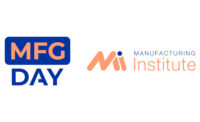NEW YORK, NY-Large global manufacturers are setting their sights on top-line growth over the next two years fueled by new products, strategic acquisitions and alliances, innovation and increasing production capacity in high-growth markets.Bolstering the growth agenda are stronger investments in supply chain risk management to mitigate the impact of continued market volatility, according to KPMG's 2011 Global Manufacturing Outlook.
The KPMG annual survey of 220 manufacturing executives, including 61 in the United States, from global companies with at least $1 billion in revenue, found that businesses are cautiously optimistic on near term prospects and are shifting from their previous emphasis on cost containment to a focus on top-line growth as a priority in the next two years.
Looking at their top priorities, 26% of the U.S. executives say they will focus on top-line growth, followed by 13% saying R&D and innovation, and 12% indicating customer relationships. Throughout the past two years, U.S. executives were most focused on cost containment, followed by customer relationships and process efficiencies/shared services. Seventy-nine percent of U.S. respondents were either very optimistic or optimistic about their company's business outlook for the next two years.
"Today, we're seeing that despite an increasing set of cost challenges, manufacturers are realigning their business models to prioritize top-line growth," says Jeff Dobbs, KPMG's global head of Diversified Industrials and a partner in the U.S. firm. "Companies have learned they can survive the challenges of economic uncertainty, political instability, and historic natural disasters with lean agile operating structures, enhanced risk management practices, and a focus on innovation."
In pressing ahead on the growth track, 39% of global respondents say they will grow through mergers and acquisitions (M&A), joint ventures and alliances; and 30% through increased production capacity, mainly in high-growth markets. U.S. respondents cite increased production capacity (36%), M&A, joint ventures and strategic alliances (31%), research and development (23%), and new sales offices (10%) as approaches to achieving growth for their companies.
"Many companies emerged from the 2008-2010 downturn with significantly reduced cost structures, more cash and liquidity, and a laser focus on their customers and markets. These survivors have the mindset and strategy to define the standard of success in the next five years," says Dobbs.
When asked to compare the primary focus areas of their growth strategies in the next two years with the two previous years, the survey revealed a marked shift in focus: 56% of manufacturers globally are planning to sell new products in new and existing markets over the next two years, up from 37%. As to where demand is expected, the United States ranks as the top market, closely followed by China, then India, with Brazil and Germany rounding out the top five. Slightly more than half see emerging markets as key to their growth strategies.
Price volatility of raw materials and inputs remains the biggest challenge for 44% of executives, followed by increased competition and pricing pressure, and uncertain demand. In the United States, price volatility on key cost inputs, uncertain demand, and intense competition and pressure on pricing were seen as the top three challenges.
To better manage volatility, 56% of manufacturers say they are reshaping their supply chain models. Standardization is one of the key strategies-55% of manufacturers plan to standardize their production process while 45% will require standardized inputs. Further, just more than 40% said they will focus on cost reduction through a shortening of the overall product development life cycle.
Nearly half of respondents say they will invest in technology to improve visibility across the supply chain, the single most important tool for managing risk. Other measures include helping suppliers develop risk management standards and assessing supply chain processes.
Monitoring where manufacturers are sourcing key components in this year's survey shows that China remains the leading sourcing destination, with the United States second, followed by India, the United Kingdom and Brazil.
Get our new eMagazine delivered to your inbox every month.
Stay in the know with Quality’s comprehensive coverage of the manufacturing and metrology industries.
SIGN UP TODAY!Copyright ©2024. All Rights Reserved BNP Media.
Design, CMS, Hosting & Web Development :: ePublishing


